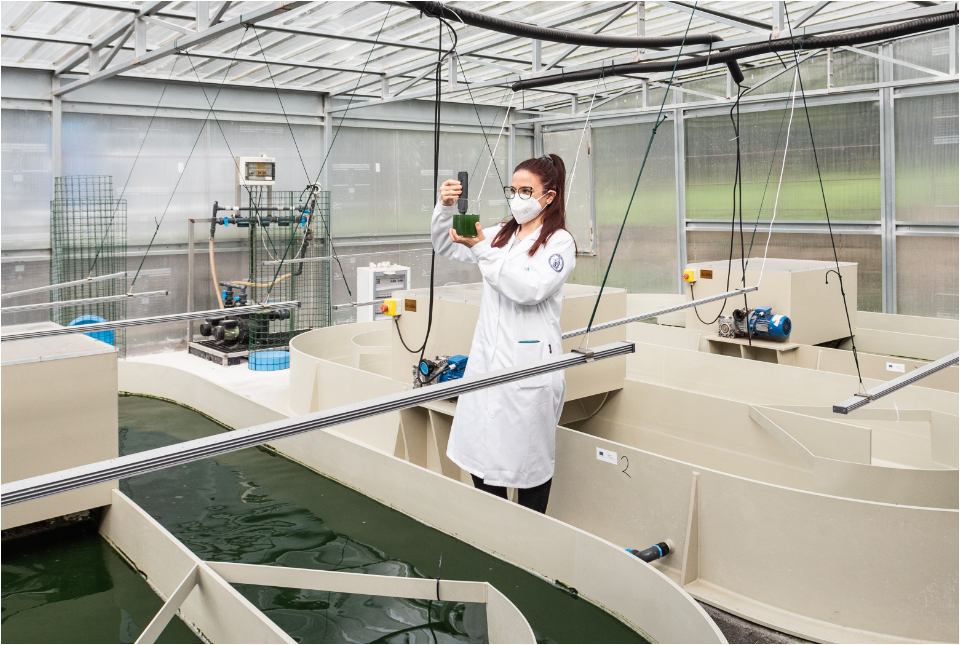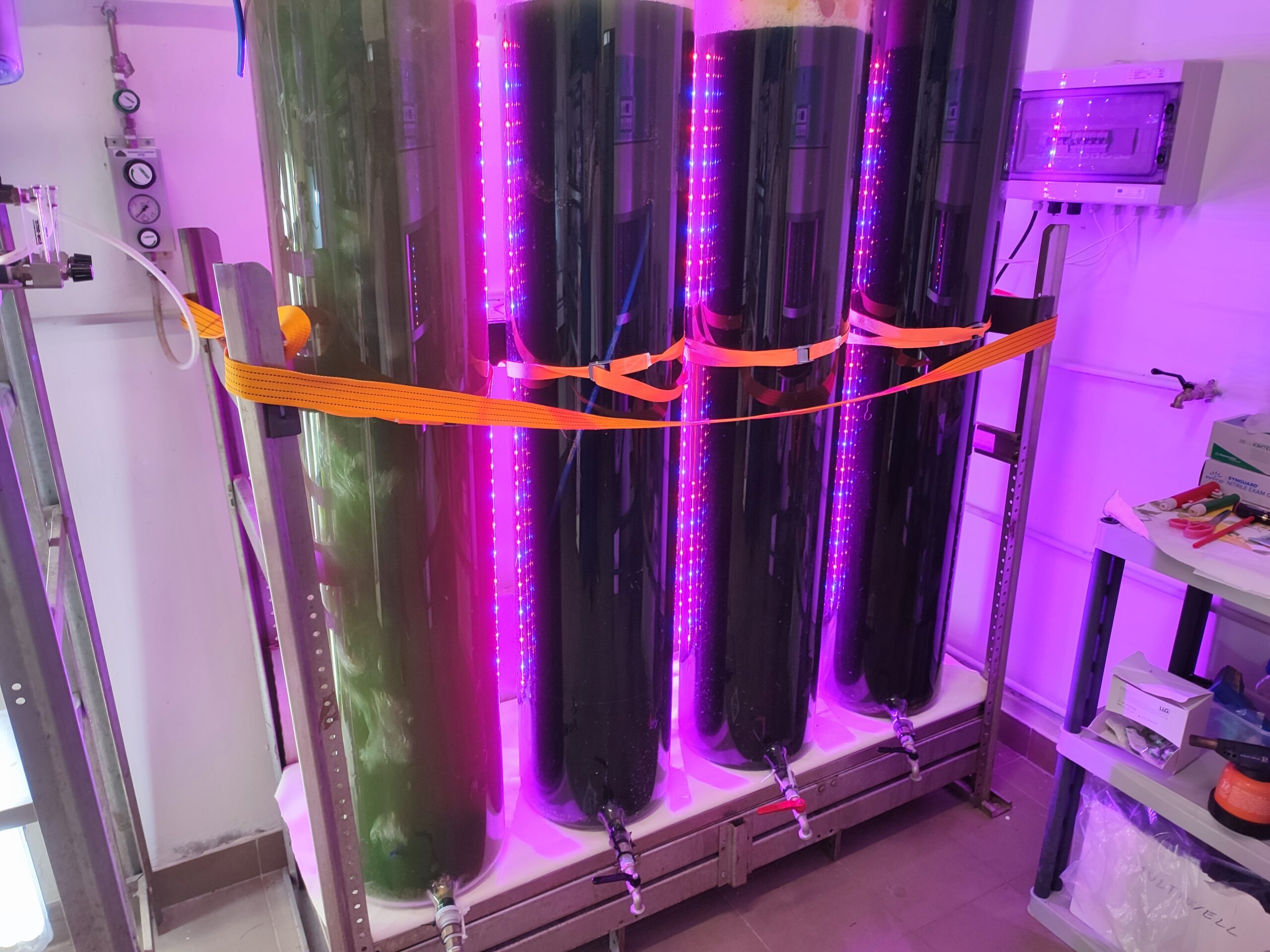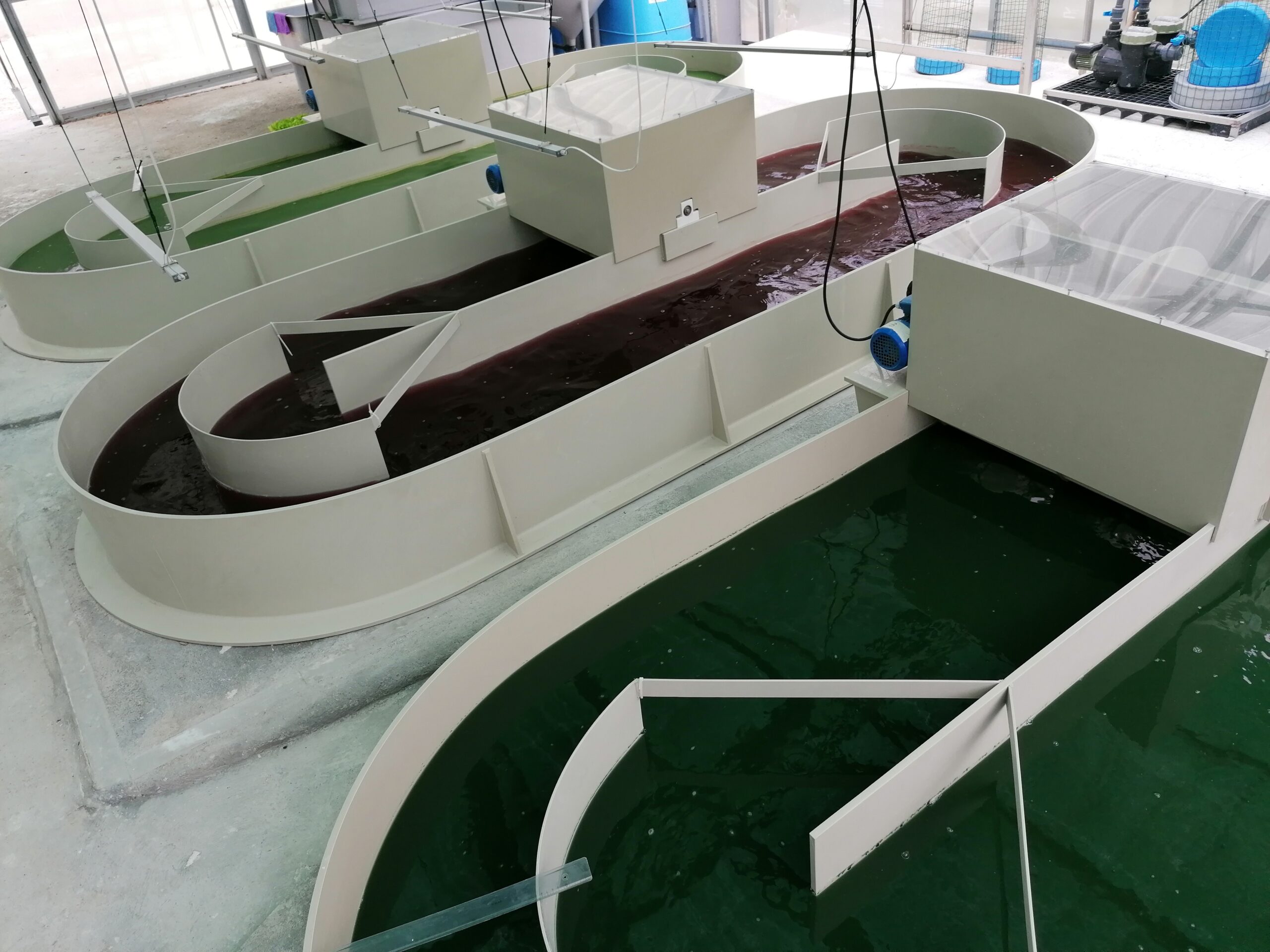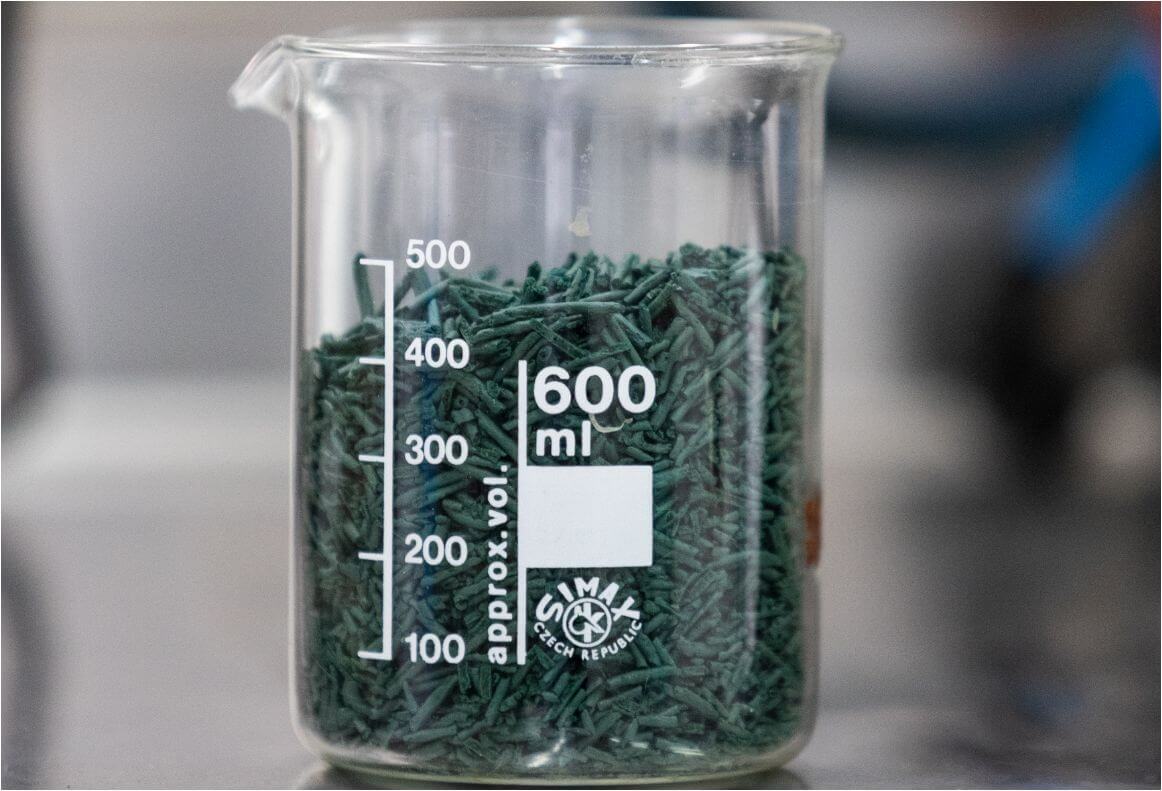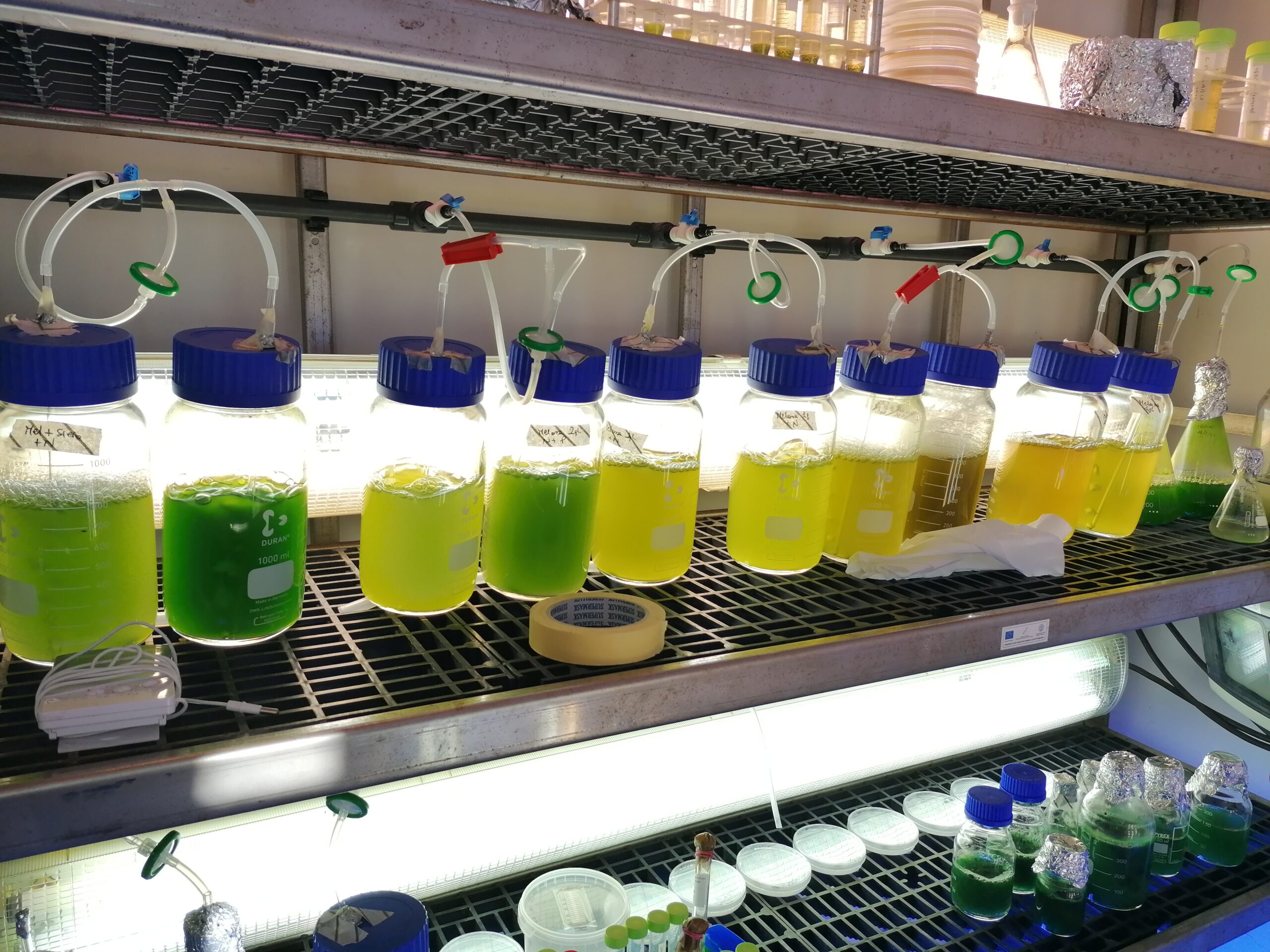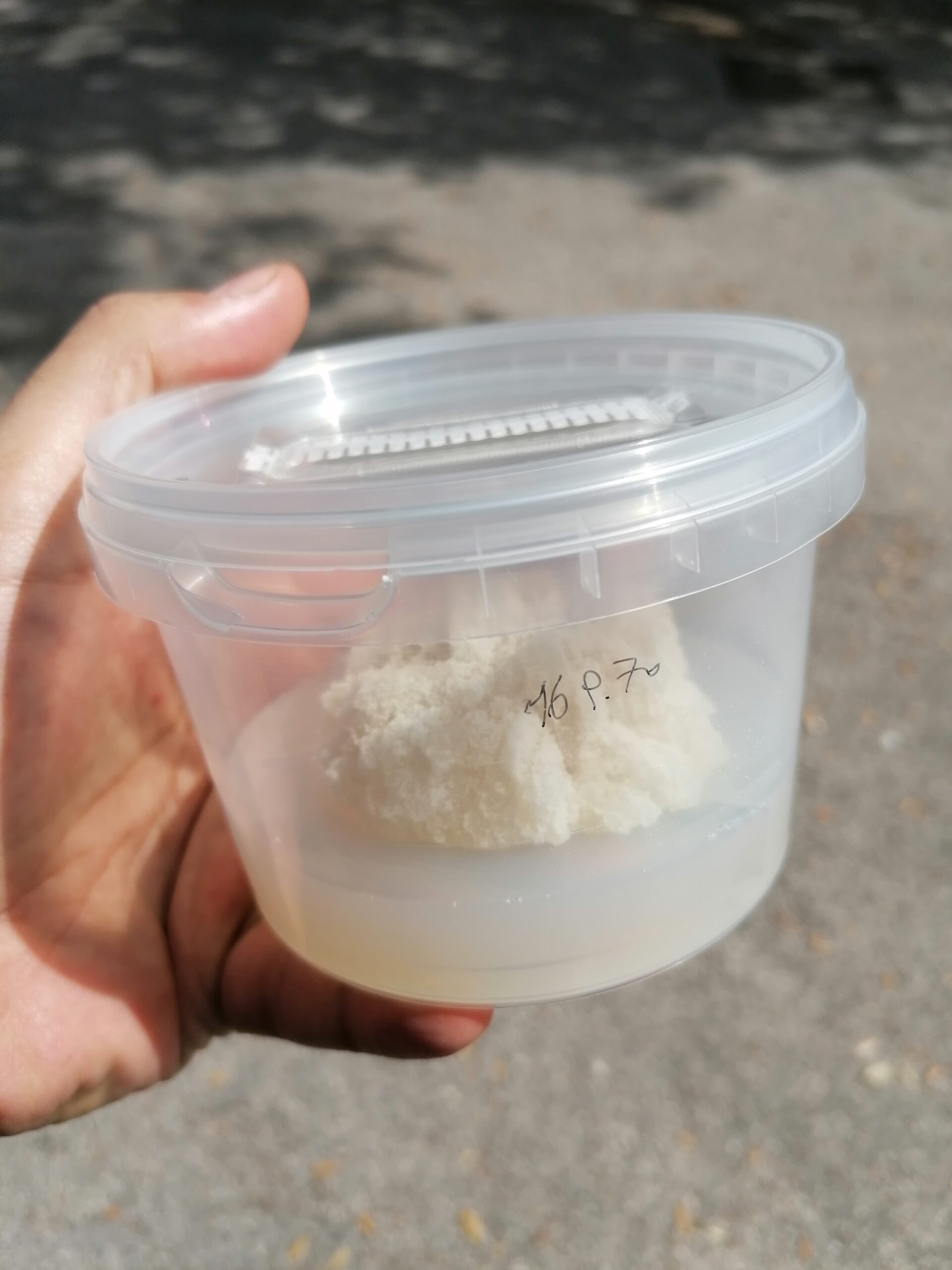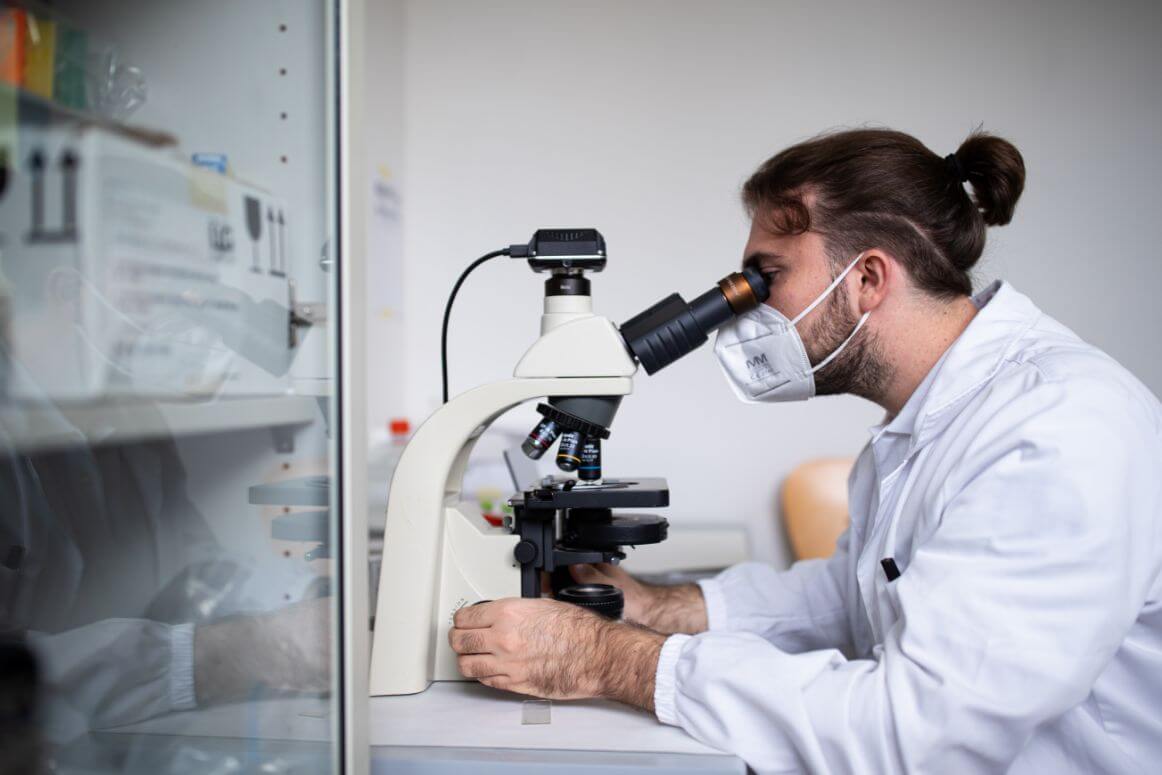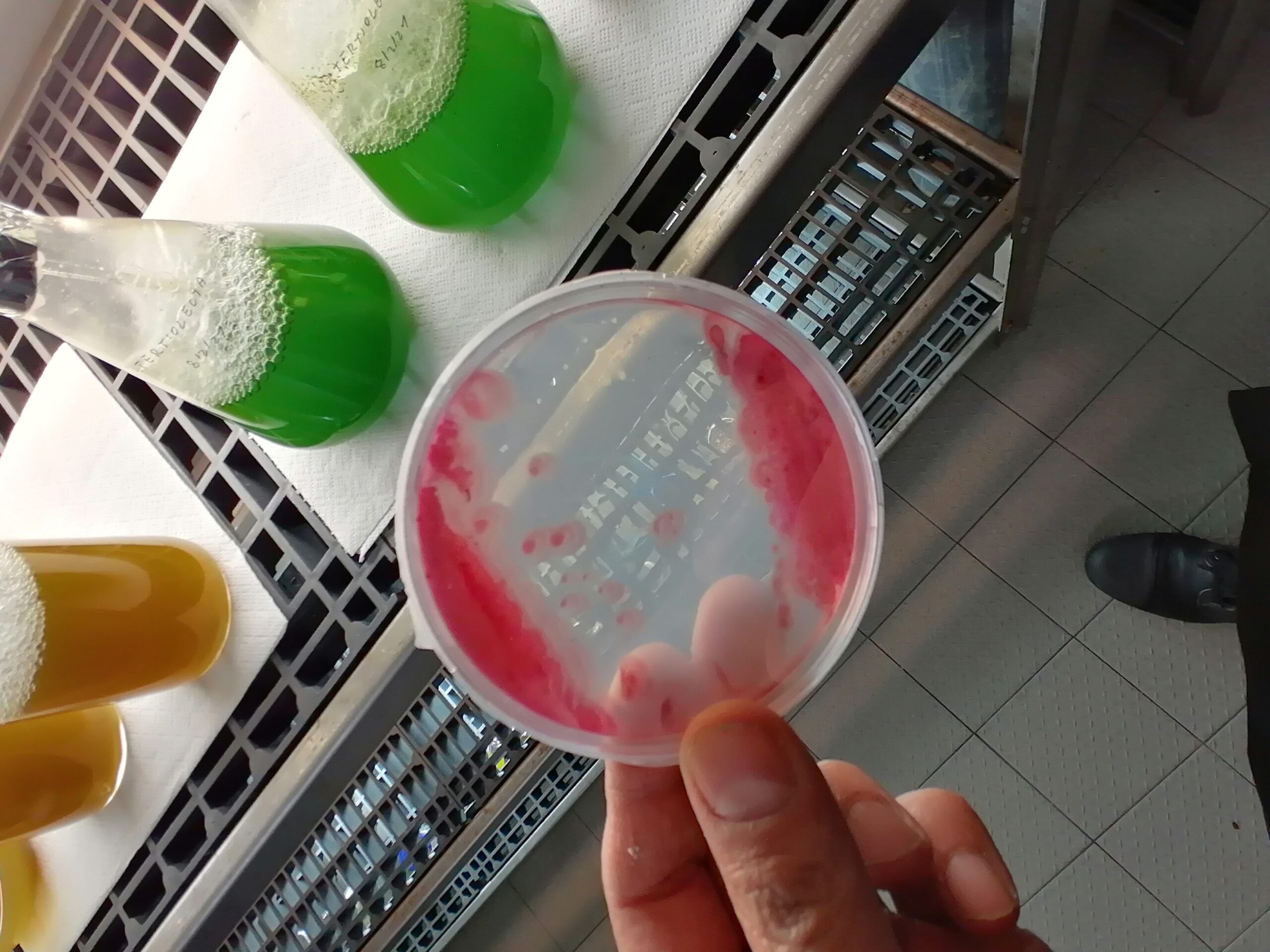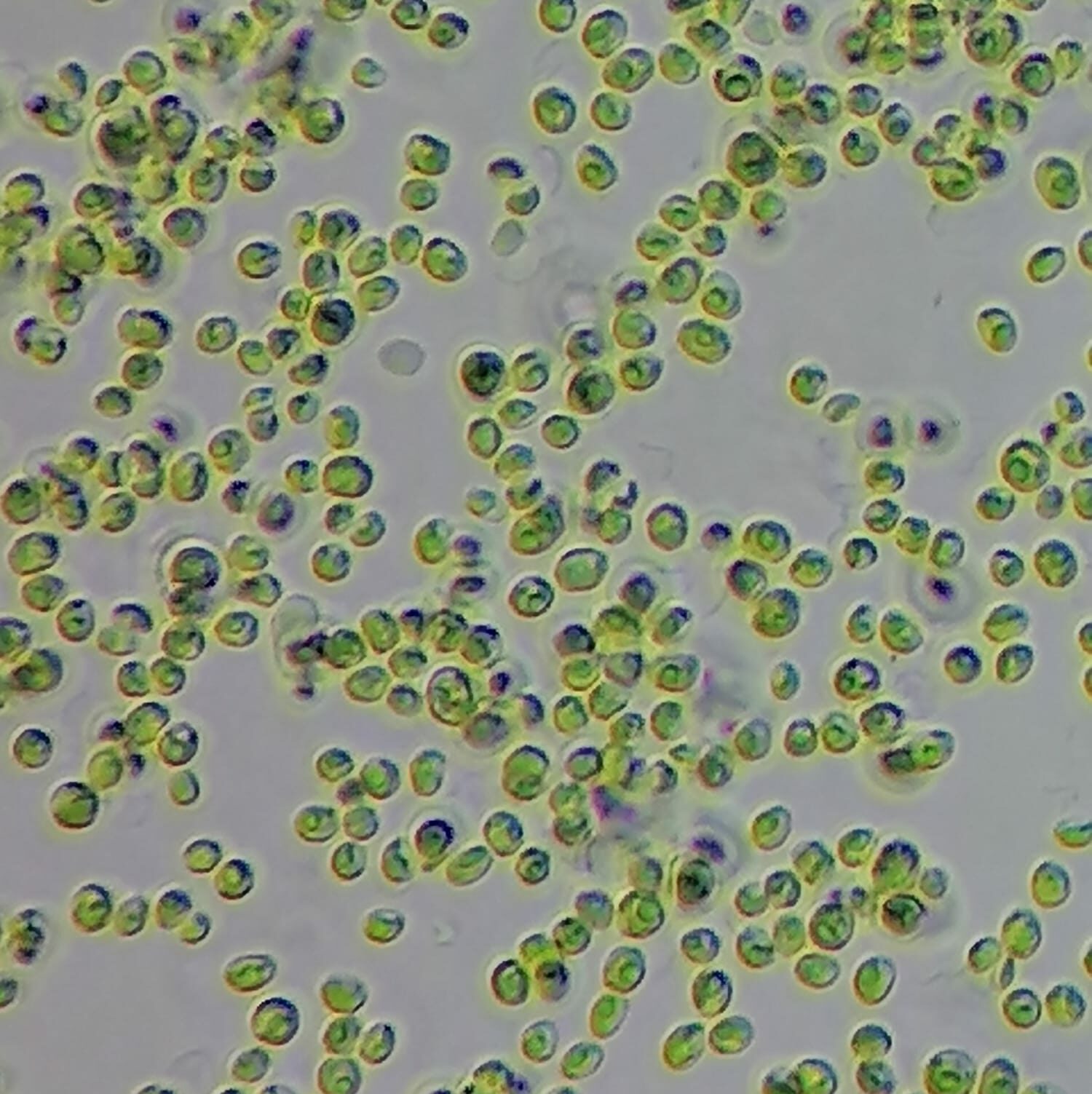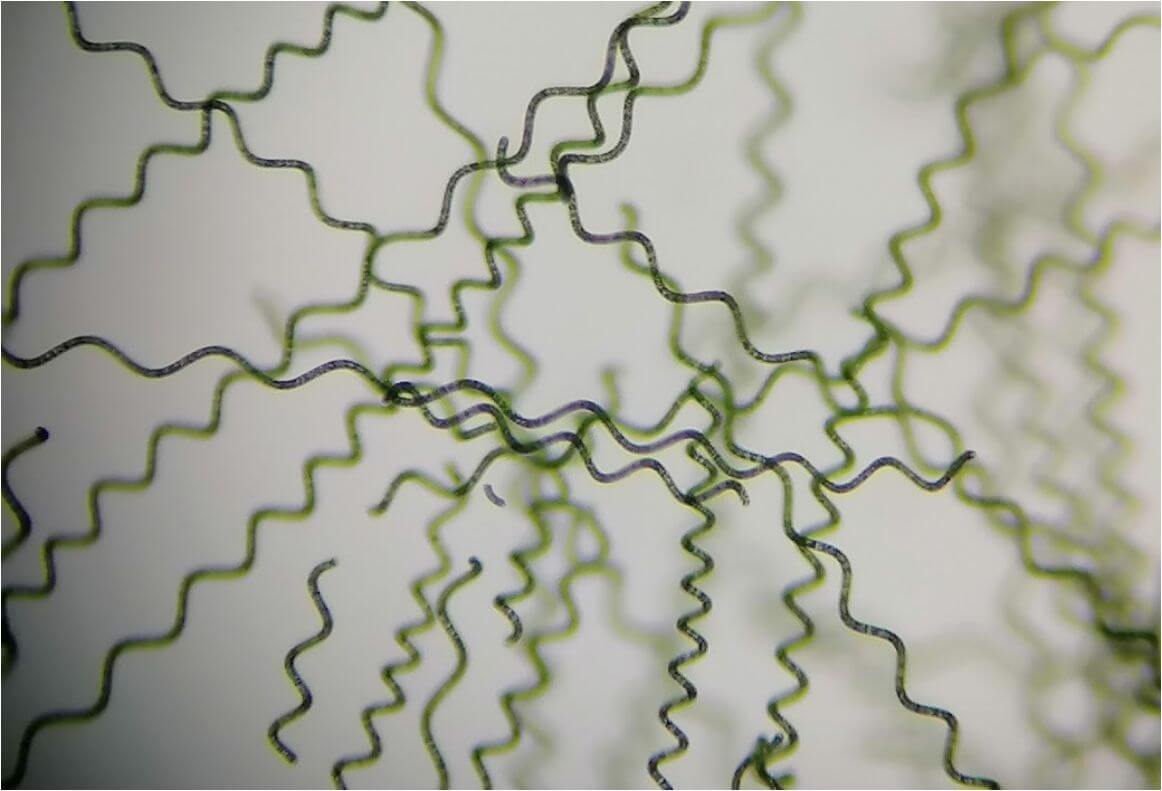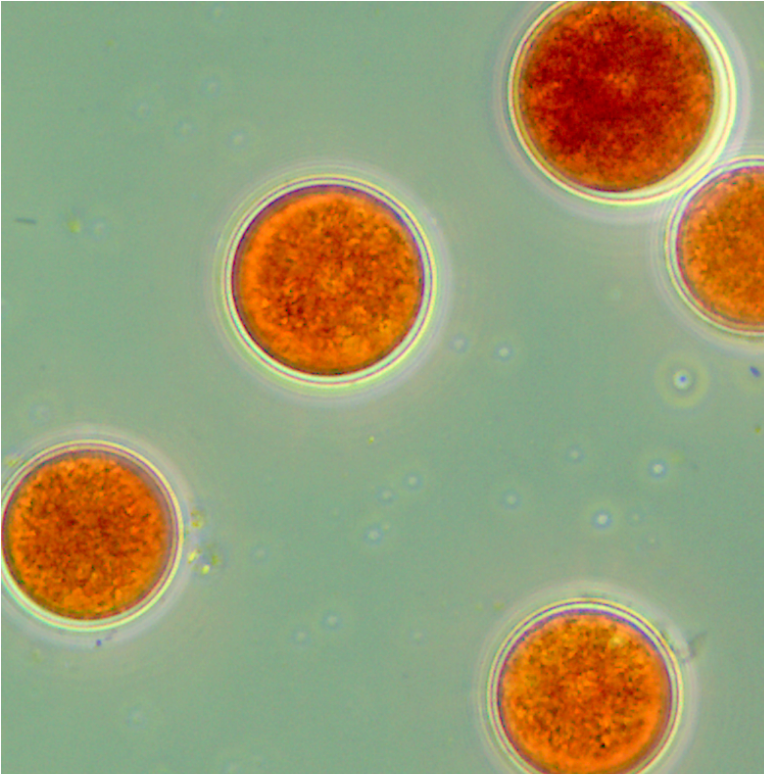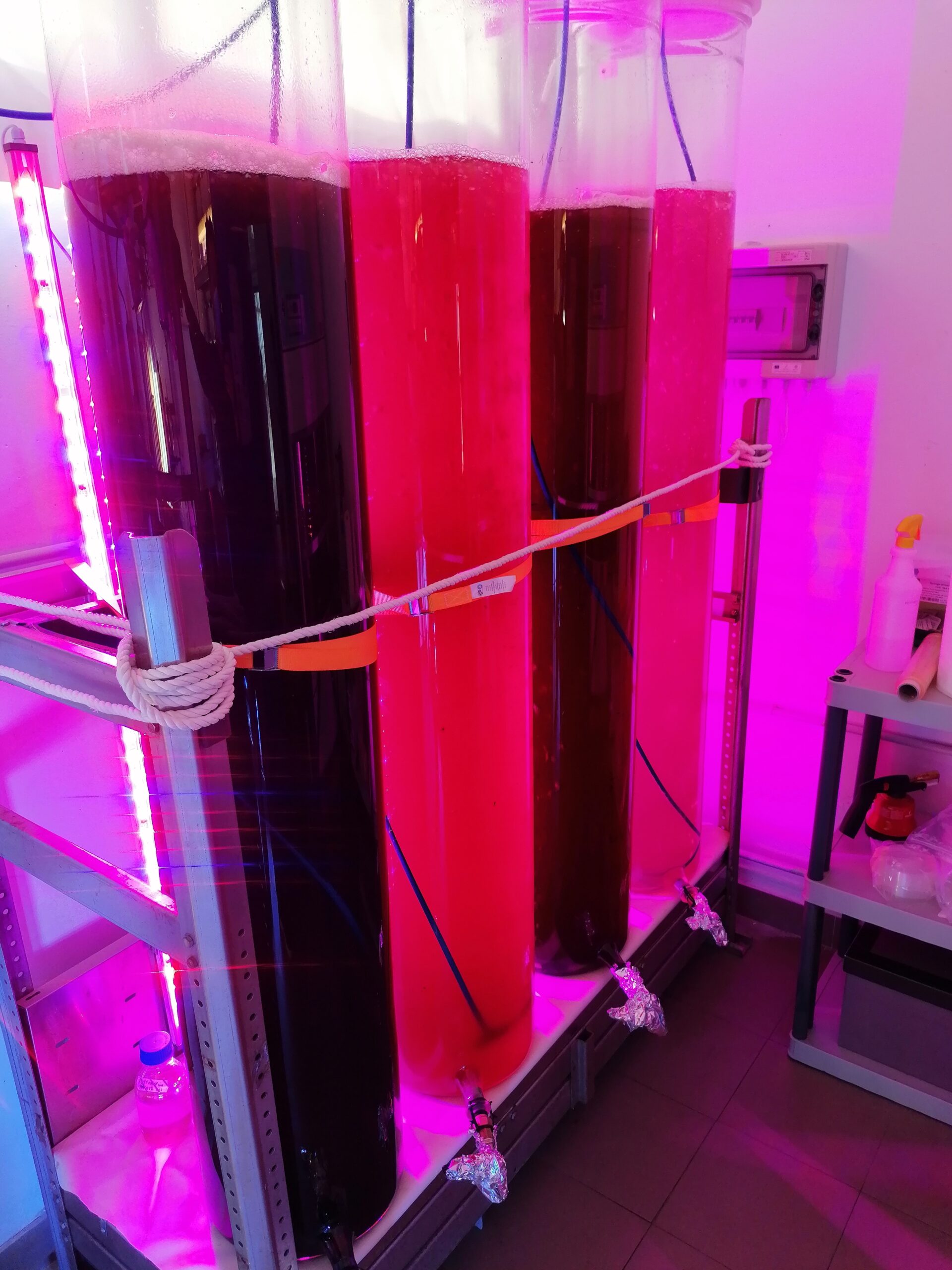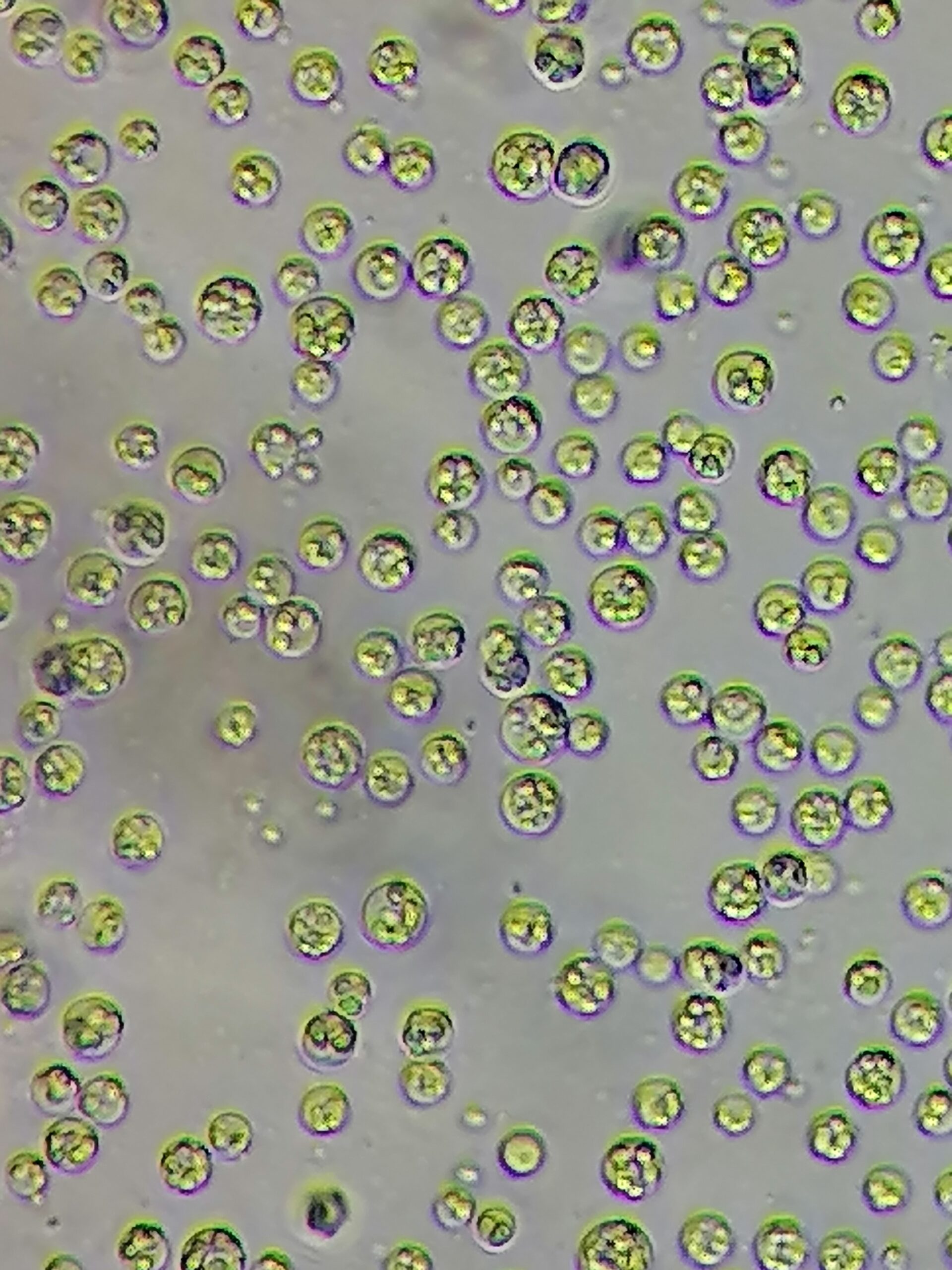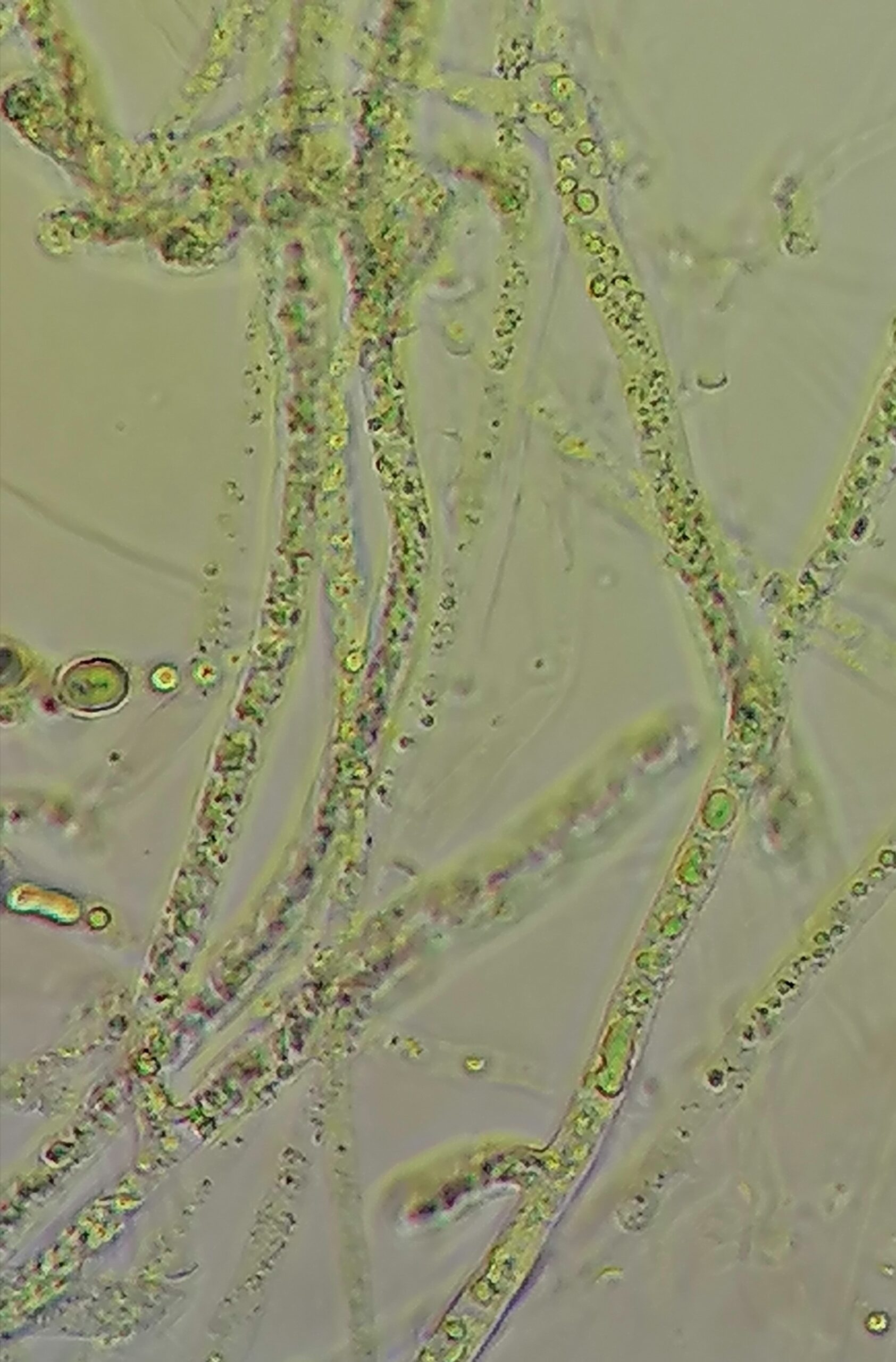Cultivation of microalgae and cyanobacteria
Home » Activities » Aquaculture » Cultivation of microalgae and cyanobacteria
In the GUS16 building there are two rooms used for the cultivation of small and medium volumes of microalgae equipped with shelves and reactors for culture volumes from 10 up to 450 L.
A greenhouse is dedicated to the a pilot microlgae production in three open “raceway” reactors with a volume of 3000 L each.
For years, the Center has been a point of reference for most of the Spirulina companies in Italy to which it provides technical-scientific support from the plant design phase, to the start-up and management of the production, up to the collection, stabilization and packaging of the finished product.
Moreover CAISIAL has specific knowledges and skills for commercial cultivation techniques of microalgae not already established into the market at industria level at least in Europe. Among the species Chlorella spp, Haematococcus pluvialis (the Astaxanthin producer) and Dunaliella salina are the most promising.
Among the activities that characterize the Center, there is the possibility of producing demo of new biomass from algae, cyanobacteria and other microorganisms for companies interested in the development of new products for different market sectors. Together with these activities, the Center provides the development and transfer of customized production protocols and technical-economic analyzes of the processes, modeled also at industrial scale.
In addition to the cultivation using light and inorganic nutrients (the so called autothrophic metabolism), the Center has developed and consolidated experience in the production of aquatic protist using both light and organic nutrients (mixotrophic metabolism) and in the dark by using organic compounds (heterotrophy). Also undifferentiated tissues of superior plants for the development of products with high added value has been carried out. Among these productions, the most relevant are some fungal-like protists such as Aurantochitryum sp. and Phytium sp. respectively for the production of the long-chain polyunsaturated fatty acids docosahexaenoic (DHA) and eicoisapentaenoic (EPA) and Galdieria sulphuraria for the production of active ingredients for cosmetics.
Quality control
For years, the Center has been a point of reference for most of the Spirulina companies in Italy to which it provides technical-scientific support from the plant design phase, to the start-up and management of the production, up to the collection, stabilization and packaging of the finished product.
The Center provide also specific services for quality assessment of final product and audit on safety and quality of the cultivation and processing.
